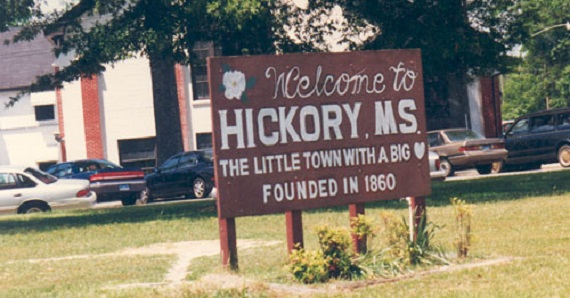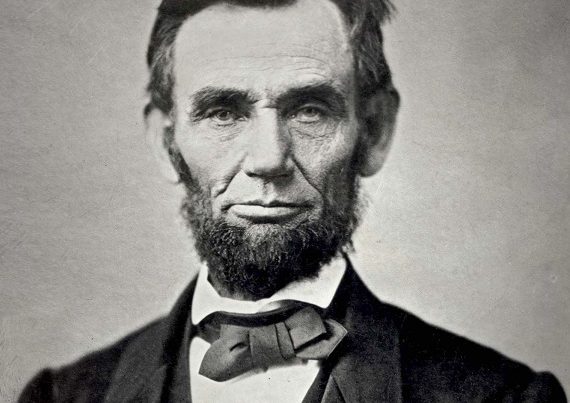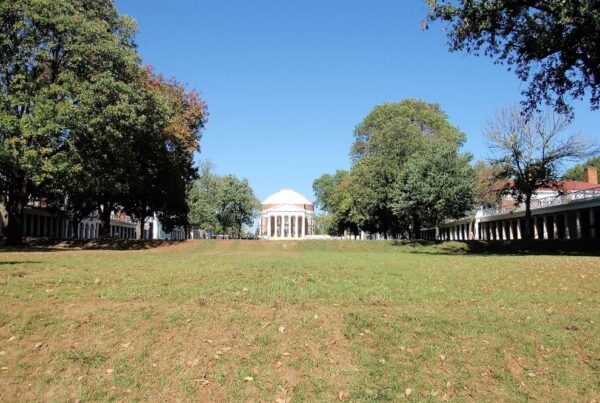If you travel I-20 east from Jackson, Mississippi, somewhere about 20 miles short of Meridian you’ll see a sign: Hickory Exit. This sign is one almost ad infinitum of green signs along a monster interstate that has sucked the life out of localism, particularly important throughout the South. But should you drive into downtown from old Highway 80, you’ll see a different sign: Welcome to Hickory, Miss. The Little Town with A Big heart. A bit more dash and devotion and emotion than: Hickory Exit.
Hickory lies in Newton County, an area rich in Southern history; much, which is not uncommon in the South, involves The War–no, not WWII. Newton County was the focal point for one of the John Wayne/John Ford often South-friendly movies about a true battle in 1863: The Battle of Newton Station. Results were heartbreaking for the Confederates but illustrated their courage and character.
Hickory is the burial ground for much of my family; at least one side of it. My father, grandfather, grandmother, uncles, aunts, cousins and friends are buried in the little cemetery on the hill, facing east, sine qua non. A small area in the rear under large shade trees is the final rest for a handful of Confederate soldiers, though most headstone inscriptions have weathered beyond legibility. The remembrance of where they died still can be read: C.S.A.
My great aunt Lula Everett, was born in Hickory, graduated from Blue Mountain college in Blue Mountain, Mississippi, returned to Hickory and taught grade school for 50 years until she retired, an old maid aunt. She lived for all those years in the same house on the small ridge which comes into sight just after rounding the bend and viewing the sign: Welcome to Hickory, Miss., The Little Town with the Big Heart. She finally died there some thirty years ago.
It was there where my brother and I spent many Christmases and Thanksgivings and many days in many summers with our country cousins. Some of these memories were fictionalized by me in a soon to be published novel: MISSISSIPPI COTTON. Through many of those times or days or nights or holidays we felt the heart of TLTWABH. Our elders talking on the screened porch in grown-up talk (a dead phrase, I fear) about things we did not understand, though sometimes teasing our imaginations; our comfortable Uncle Walter, smoking his savory-smelling briar pipe while sitting in the porch swing. He was an Ole Miss Law graduate who returned to TLTWABH, having served at one point as a local judge (hence his nickname among townspeople, Judge), and practiced law for fifty years; the windmill we climbed, standing beside the house, its pump long since having rusted beyond use.
Even those who left for distant lands, Jackson, Memphis and even Cousin Bill who late in life moved to Pensacola, returned. Uncle Hiram went to Ole Miss Medical School and practiced medicine in Memphis for over 50 years, though upon his death he returned to TLTWABH. And Uncle Bill who moved to Little Rock and was a successful businessman is buried on the little hill facing east in TLTWABH. My grandmother who also graduated from Blue Mountain and followed my grandfather to Jackson with his lumber business also returned to a final rest in TLTWABH beside her husband.
It was in this setting of my home-away-from-home (my brother and I were born and reared in the big city–Jackson) that I discovered something as a boy that I only recognized later as a man: localism. The spirit of “local” is the attendant existence of an agrarian life. Not just in Mississippi, but throughout the South.
One has to only read Southern literature to understand the provincial milieu of the South and the agrarian roots that have fed it. From Joel Chandler Harris to William Faulkner to Eudora Welty, and occasionally to John Grisham, when he has the urge, narratives of the South have throbbed with story: aboriginal, provincial, local, which is where all good tales originate; because chronicles or yarn, both, have at least a kernel of truth, and truth is about real people; not pasted together adventures of heroes lurking (mystery) or leaping (adventure) around skyscrapers and towers and up-and-away jet planes crashing via laser powered sci-fi matrixes, but of rural, geographically defined and confined lineage, and always Southern: family, characters, and folksy icons, from Mark Twain to Junior Johnson to Junior Samples to Jeff Foxsworthy , the South has always been, as well, a culture of characters: characters and neighborhoods, not characters and metropolises or empires or interstate highways tying together a nation.
But this culture has been pierced by the 4, 6 and 8 lane monster that roars through the countryside with its personification having more power and less conscience than Sherman ever demonstrated. Hickory, Mississippi, population 500, The Little Town with a Big Heart, has been swept aside by a modern monster of enlightenment, and expediency.
Presently, the sign designating TLTWABH has been consigned to the edge of the town square so that upon rounding the curve on old highway 80 approaching Hickory, no longer are you greeted by the sign. But few round the bend anymore; most are chasing life on I-20, never to see or experience TLTWABH.
The town is still cleaved by the rustic old highway with its browned, aged, concrete and narrow lanes. From Jackson to Brandon to Pelahatchie to Morton to … it ran through all the towns, pausing for local stores, and cafes via local speed limits and only a few red lights. In its time a modern conduit, a smaller gash cut through the land for people. The paradox is that the interstate isolates the local; isolates it from people. People pass by not through and no longer visit the stores and cafes, or talk to the locals. They are hurrying to bigness on the other side of the world.
Highway 80 seemed harmless. It seemed good. But maybe all roads are as Kildee says in James Kibler’s novel, WALKING TOWARD HOME: “Guess the best thing dirt roads do…is they slow people down. The world’s too much in a hurry, and usually with no place to go. Everything flies by in a blur. And people get to where they don’t belong anywhere and ain’t from no place at all.”
But, today the old highway’s seed, the federal interstate monster: the scoured-powered transit with its green exit signs dominated by federal highway programs and DOT and every other acrostic and/or acronym for a mock organism abetting the accelerated dash through the land makes old highway 80 seem as it once appeared to me coming round the bend–a country road, a pathway to family.
And though the sign depicting TLTWABH is downtown, away from all, who only pass, it is still committed to heart. Maybe downtown is where it truly belongs; in its home; because it is local; because the South is local.







